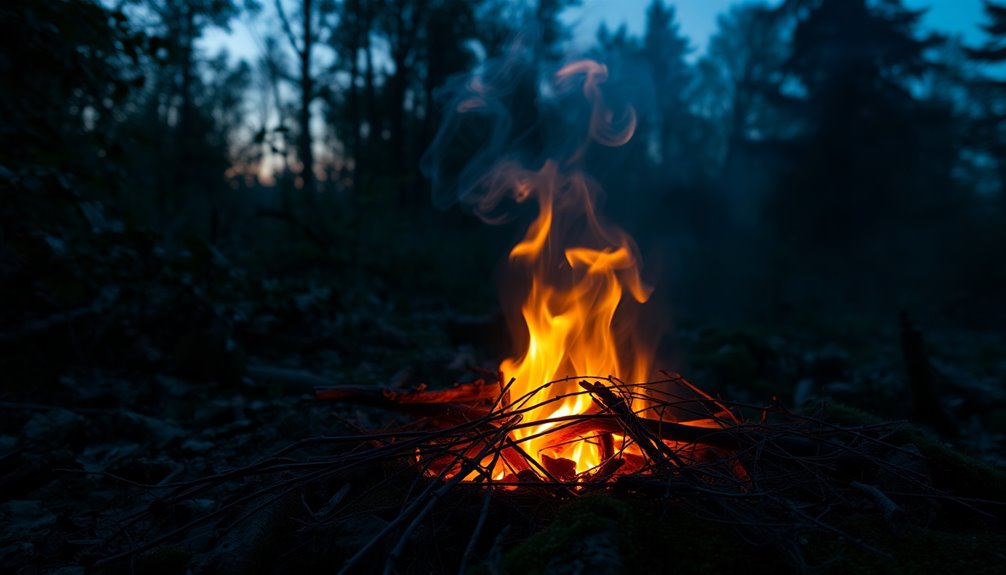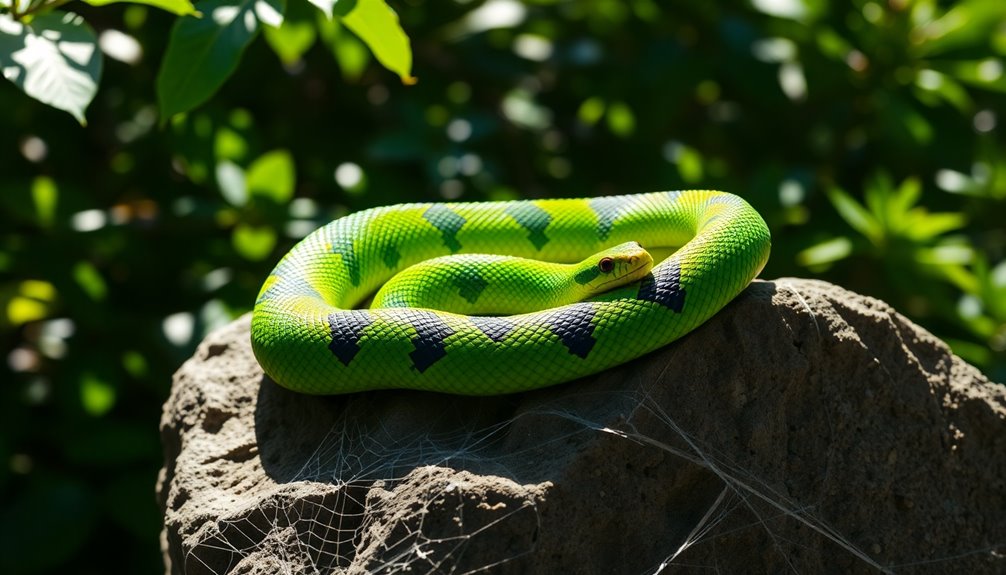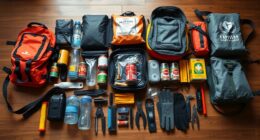In wilderness survival, collecting water is crucial. Start by locating surface water like lakes and streams, but always purify it first. If you can't find water, observe vegetation for signs of underground sources. Melt snow using techniques like the V-Vessel or add it to your canteen with water. You can also collect condensation with plastic bags or solar stills. For more efficient methods and purification tips, there's plenty more to explore.
Key Takeaways
- Collect rainwater using gutter systems and rain barrels for sustainable irrigation and chemical-free hydration.
- Search for animal tracks, lush vegetation, and topographical features to locate nearby surface and underground water sources.
- Utilize condensation techniques like tying plastic bags around branches or capturing dew with absorbent cloths.
- Employ methods such as solar stills or tarp systems to collect and purify water through evaporation and condensation.
- Regularly clean and maintain storage containers to ensure water quality and use boiling or purification tablets for further purification.
Gutter Systems and Rain Barrels
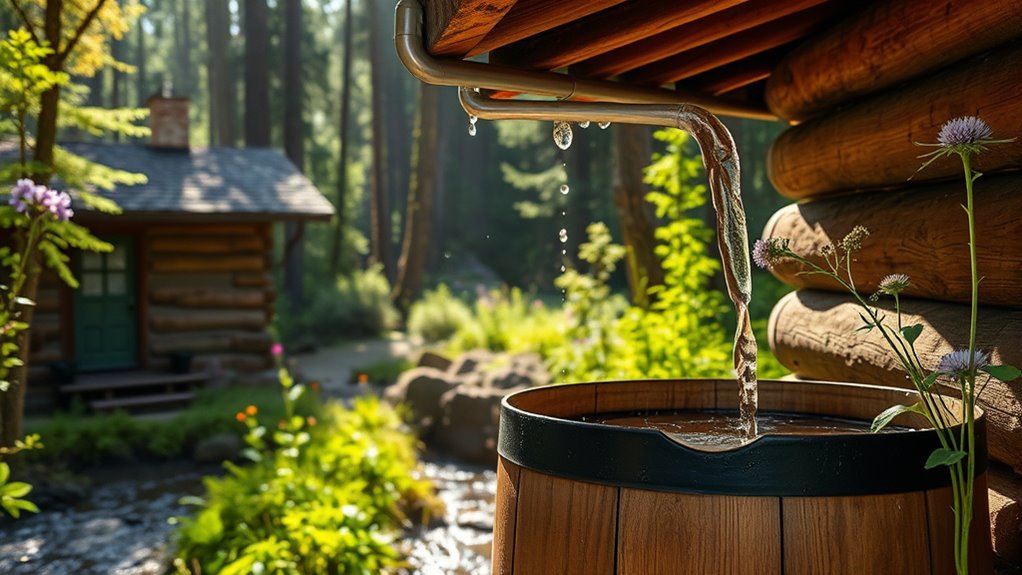
Gutter systems and rain barrels provide a practical way to harness rainwater for sustainable use. By collecting rain from your rooftop, you create a reliable water source for non-potable needs like irrigation.
Harness rainwater from your rooftop with gutter systems and rain barrels for sustainable irrigation.
This setup not only reduces stormwater runoff but also conserves municipal water, giving your plants chemical-free hydration. You can choose from various barrel types—metal, plastic, wood, or even DIY options like garbage cans.
For optimal performance, ensure your gutters function well, install guards to block debris, and connect downspouts effectively. Don't forget to manage overflow and clean your system regularly to prevent algae growth.
With a little maintenance, your rain collection system can thrive and support both your garden and the environment.
Techniques for Finding Surface Water
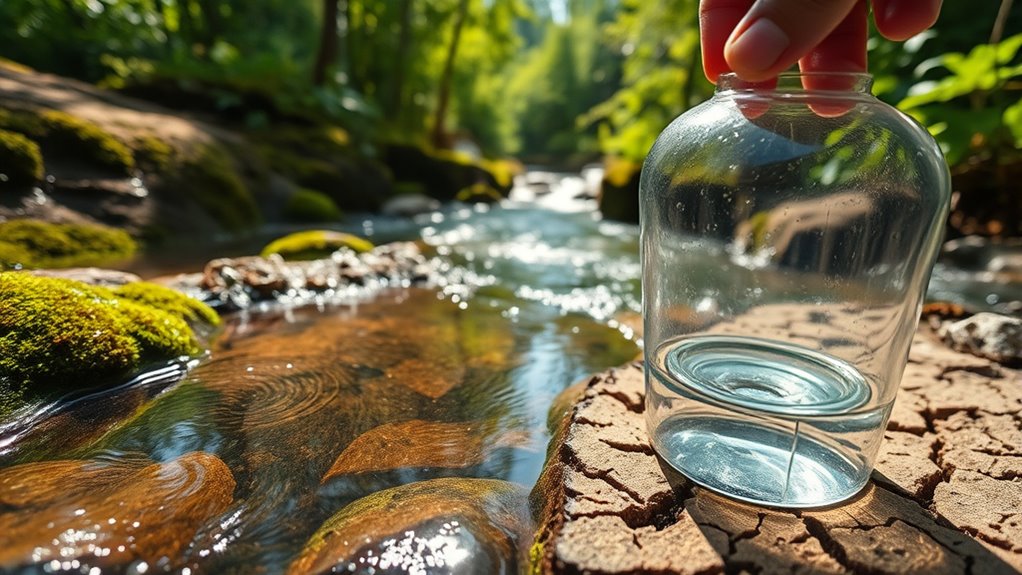
When you're in the wilderness and need to find surface water, it's essential to know where to look.
Start by searching for lakes and streams, which are common sources, but remember they usually require purification. Ponds and wetlands can also provide water, though they tend to be more stagnant.
Follow animal tracks; they often lead to water sources since animals need to drink. Look for lush vegetation like willows and cattails as indicators of nearby water.
Pay attention to insect activity and bird behaviors, as these can signal water presence. Lastly, explore valleys and dry river beds; they might reveal where water flows in wetter seasons.
Methods for Melting Snow and Ice

In survival situations, knowing how to melt snow and ice for water can make a crucial difference.
One effective method is the V-Vessel technique, where you use a split log to channel melted snow, sealing it with spruce or pine resin.
The parachute water generator creates a pouch filled with snow, melting it with heat from a fire.
The parachute water generator utilizes heat from a fire to melt snow stored in a specialized pouch.
If you're on the move, add snow or ice to your canteen with existing water to facilitate melting.
Direct heating with a fire or canteen cup is straightforward but requires care.
For natural aids, vinegar and wood ash can lower freezing points, helping melt ice and snow efficiently.
Techniques for Finding Underground Water
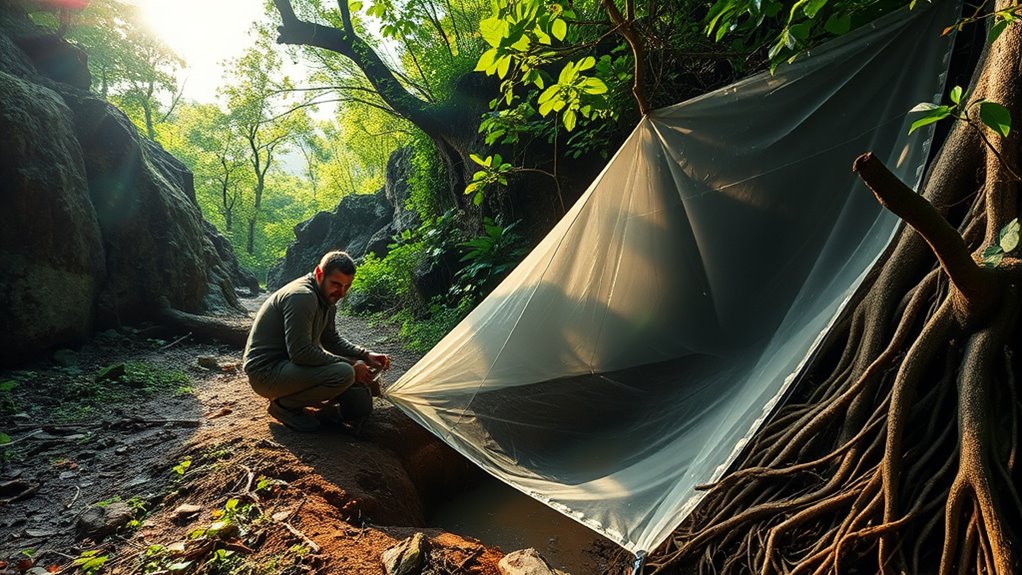
Finding underground water can be a game changer in survival situations, and there are several effective techniques to help you locate it.
Start by observing vegetation; denser, greener areas often signal nearby water sources. Look for topographical features like valleys or depressions, as these tend to collect water.
Following animal tracks can lead you to water since animals frequently visit sources at dawn or dusk. Muddy spots also hint at accessible groundwater; dig there for a better chance.
Don't overlook dry riverbeds, as they may conceal water just beneath the surface.
Methods for Collecting Condensation
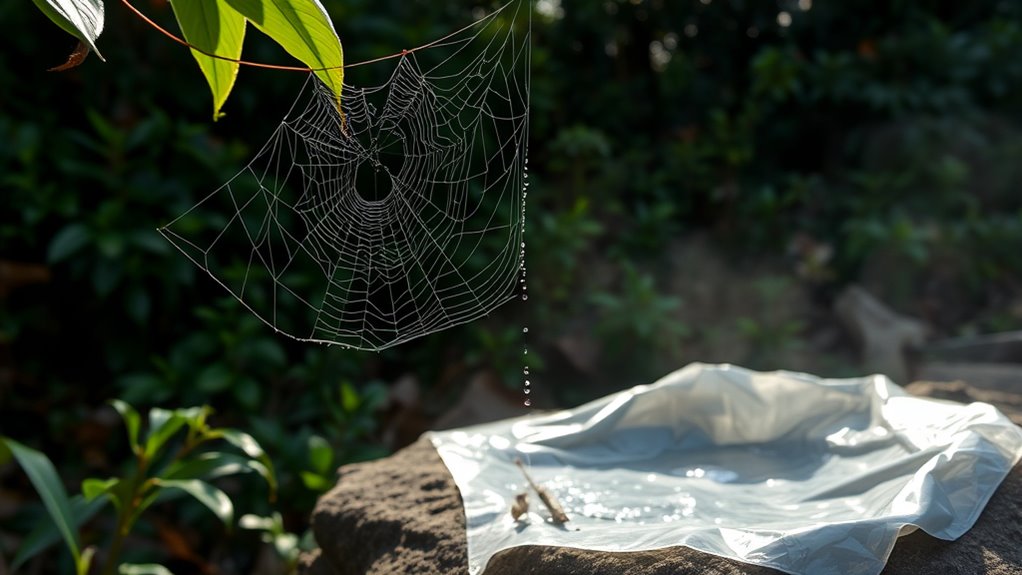
Although water sources may be scarce in arid environments, you can effectively collect condensation to meet your hydration needs.
Start by utilizing plant transpiration; simply tie clear plastic bags around leafy branches to gather moisture. For dew, place absorbent cloths on cool surfaces overnight to capture droplets.
You can also create solar stills—these use sunlight to evaporate water, which then condenses for collection. If you're in a foggy area, set up mesh nets to catch droplets, mimicking natural structures like spider silk.
Additionally, tarp systems can trap condensation by covering shallow holes with containers. By employing these methods, you can maximize your water collection efforts and stay hydrated in challenging conditions.
Storage and Purification Techniques
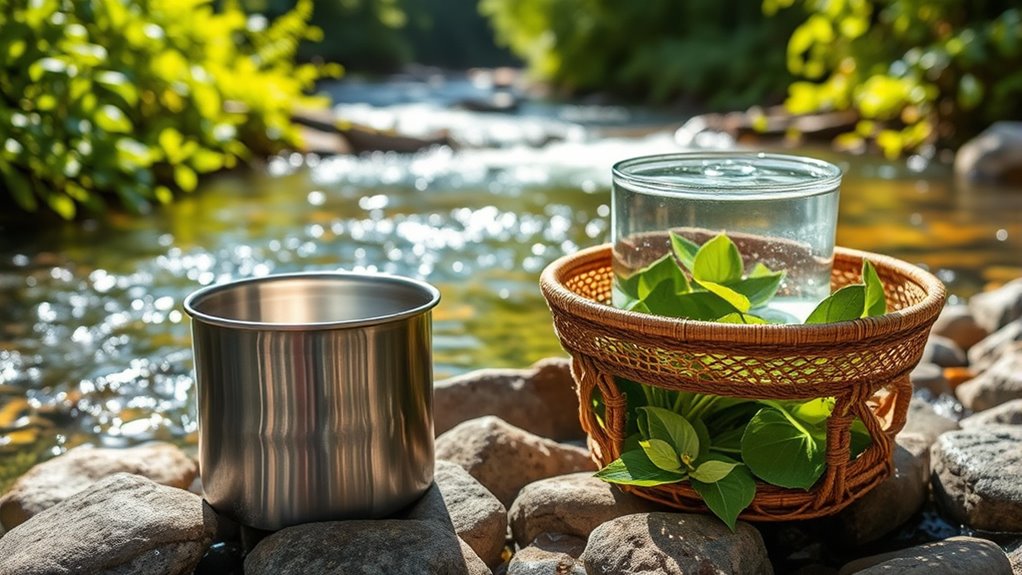
Successfully collecting water is only part of the survival equation; how you store and purify that water is just as important.
Collecting water is crucial, but proper storage and purification are essential for survival.
Use food-grade barrels with sealed lids to store rainwater, preventing contamination. In emergencies, tarps or ponchos can efficiently collect water. Choose durable containers and keep them in shaded areas to minimize bacterial growth. Regularly clean these containers to maintain water quality.
For purification, boiling is a reliable method—just bring water to a rolling boil for a minute. Alternatively, use purification tablets or employ distillation to remove contaminants.
If you're without metal containers, try stone boiling, or use solar disinfection by exposing clear containers to sunlight. Always assess water sources for safety before collection and purification.
Frequently Asked Questions
What Are the Signs of Safe Drinking Water in the Wilderness?
When you're looking for safe drinking water in the wilderness, focus on flowing streams or rivers, as they're generally safer than stagnant sources.
Look for clear water, but remember it's not always reliable. Avoid water with dead animals nearby.
Check for signs like morning fog, which can indicate water presence.
Always assume water is contaminated until you purify it through boiling, filtering, or using chemical treatments.
Your health depends on it!
Can I Use Seawater for Drinking or Cooking?
Imagine you're standing on a beach, a shimmering oasis before you.
But that glistening water isn't your friend; it's a deceptive mirage. You can't use seawater for drinking or cooking, as its high salt content will pull moisture from your body, leaving you parched and weak.
Instead, seek fresh water sources nearby or harness rainwater.
How Can I Enhance the Taste of Collected Water?
To enhance the taste of collected water, you can try several methods.
Boil the water to eliminate bacteria, then add natural flavors like citrus fruits or mint leaves.
Consider using activated charcoal filters to remove impurities, or filter through clean cloth to reduce sediment.
Storing water in clean, non-metal containers and keeping it cool can also help maintain freshness.
Lastly, let the water aerate to improve its overall flavor.
What Risks Are Associated With Collecting Rainwater?
When you're catching rainwater, it's like trying to capture whispers of the sky.
However, risks lurk beneath the surface. Air pollutants can taint your collection, while roofing materials might leach harmful chemicals. If your gutters aren't clean, they could turn into breeding grounds for bacteria.
Storing water improperly invites stagnation and algae, compromising quality. Regular testing is key to ensure what you're collecting is truly safe to drink.
Stay vigilant!
How Long Can Stored Water Remain Safe to Drink?
Stored water can remain safe to drink indefinitely if you keep it in clean, airtight containers and away from contaminants.
It's best to use food-grade plastic or glass containers. However, you should replace the water every six months to maintain its safety, as disinfectant properties may diminish.
Always store it in cool, dark places to prevent bacterial growth and consider rotating your supply for optimal taste and safety.
Conclusion
In the wild, knowing how to collect water can be the difference between life and death. By mastering these methods, you'll feel like a survival superhero, ready to tackle any challenge nature throws your way. Remember, whether you're gathering rain, melting snow, or discovering hidden springs, staying hydrated is your top priority. So, embrace these techniques, adapt to your environment, and never underestimate the power of water in your wilderness adventures!





